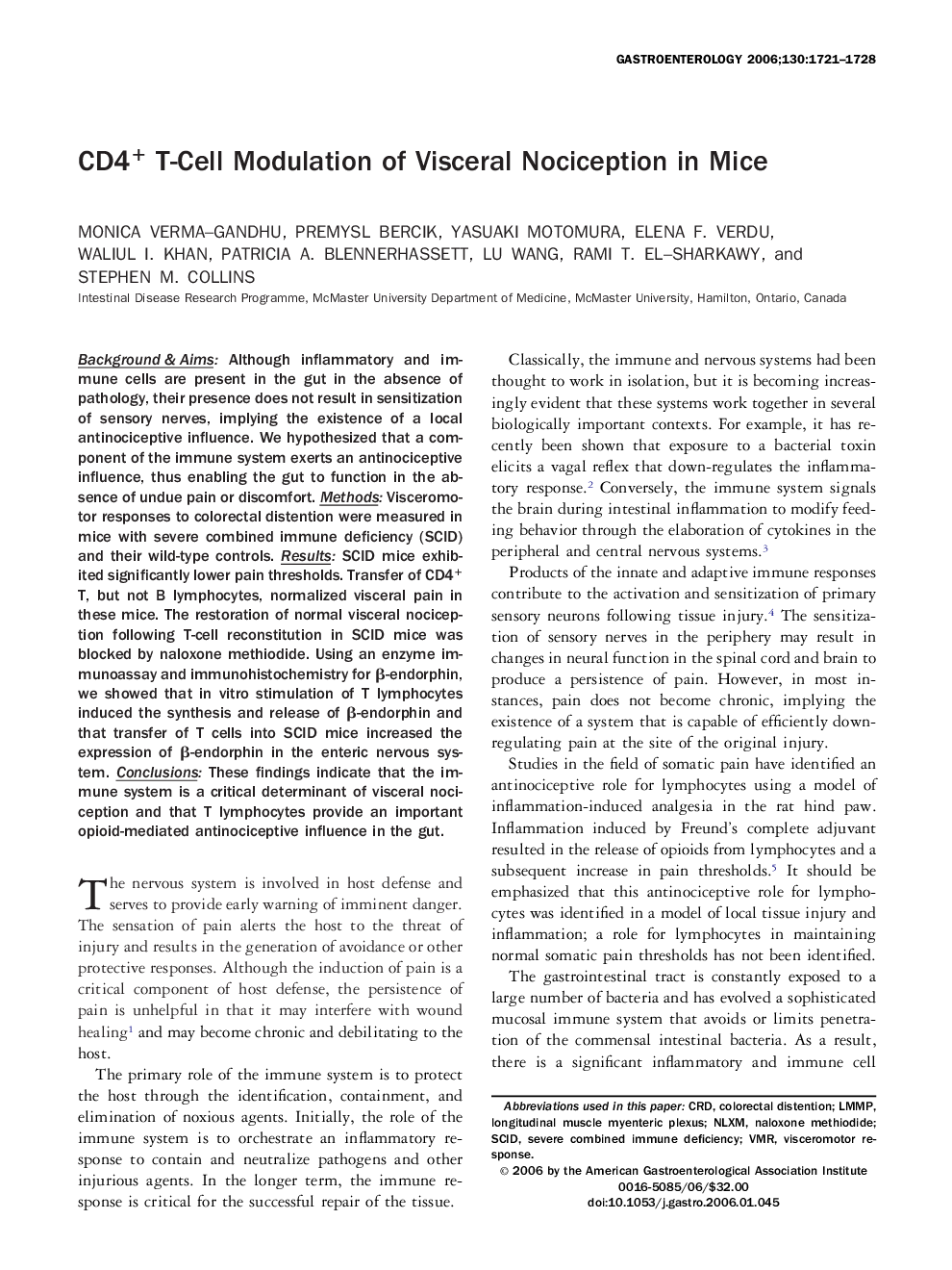| Article ID | Journal | Published Year | Pages | File Type |
|---|---|---|---|---|
| 3297628 | Gastroenterology | 2006 | 8 Pages |
Abstract
Background & Aims: Although inflammatory and immune cells are present in the gut in the absence of pathology, their presence does not result in sensitization of sensory nerves, implying the existence of a local antinociceptive influence. We hypothesized that a component of the immune system exerts an antinociceptive influence, thus enabling the gut to function in the absence of undue pain or discomfort. Methods: Visceromotor responses to colorectal distention were measured in mice with severe combined immune deficiency (SCID) and their wild-type controls. Results: SCID mice exhibited significantly lower pain thresholds. Transfer of CD4+ T, but not B lymphocytes, normalized visceral pain in these mice. The restoration of normal visceral nociception following T-cell reconstitution in SCID mice was blocked by naloxone methiodide. Using an enzyme immunoassay and immunohistochemistry for β-endorphin, we showed that in vitro stimulation of T lymphocytes induced the synthesis and release of β-endorphin and that transfer of T cells into SCID mice increased the expression of β-endorphin in the enteric nervous system. Conclusions: These findings indicate that the immune system is a critical determinant of visceral nociception and that T lymphocytes provide an important opioid-mediated antinociceptive influence in the gut.
Keywords
Related Topics
Health Sciences
Medicine and Dentistry
Gastroenterology
Authors
Monica Verma-Gandhu, Premysl Bercik, Yasuaki Motomura, Elena F. Verdu, Waliul I. Khan, Patricia A. Blennerhassett, Lu Wang, Rami T. El-Sharkawy, Stephen M. Collins,
